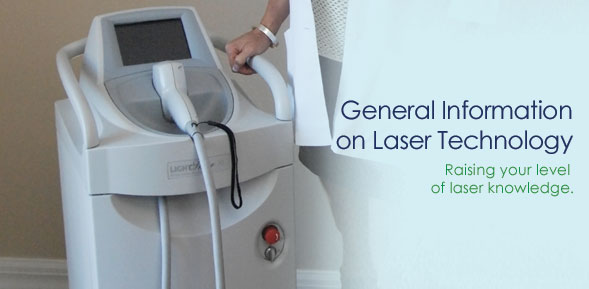Laser Info

Lasers are used by health care professionals around the world. Currently, medical lasers are being used routinely for a wide variety of surgical and therapeutic applications including: venous ablation, hair removal, wrinkle treatments, ophthalmic procedures, wound healing, tissue ablation in many types of surgery, veterinary procedures, dental procedures and treating pain and inflammation in a rehabilitation or pain management setting. However, despite the wide acceptance of this equipment, there is a lack in the amount and quality of information upon which the end user can apply to clinical situations. Therefore, AIMLA's purpose is to provide an accurate overview of the most common application of medical lasers.
In 1916 Albert Einstein postulated the theory of lasers in an assumption necessary to support the Theory of Relativity. Therefore, the idea of lasers is not new. Einstein correctly proposed that when a photon of the correct energy level collides with an atom that has been energized under the right conditions, two photons of precisely the same energy would be emitted.
Laser is an acronym that originally was coined to describe the process of creating laser light. It has come to be used most commonly to name both the apparatus and the light that it produces. It is Light Amplification by Stimulated Emission of Radiation.
Simply defined, a laser is any device which can be made to produce or amplify electromagnetic radiation in the wavelength range from 180 nm to 1 mm, primarily by the process of controlled stimulated emission.
Before an explanation of how a laser works is offered, one should examine how light from an ordinary light bulb is emitted. Energy is supplied in the form of electricity to a filament within the bulb. This excites electrons that are in a resting state to a state of excitement. As these electrons return to the resting state, they emit a single photon of light. Electrons are continually being excited while others that are excited are spontaneously decaying back to their resting orbit. The difference in these energy levels results in the release of a single photon. This resulting release is a spontaneous emission of photons.
By definition, a photon is a discrete bundle (or quantum) of electromagnetic (or light) energy.
A laser is an amplifier of light. It is an instrument that provides an environment to support and sustain a stimulated emission of photons.
Three main components of a laser are:
- An energy source
- A lasing or amplifying medium
- A resonating cavity bound by mirrors
Electrical energy is the most common power source for the laser and the lasing medium must be able to store the energy that is supplied to it. This process is called population inversion and is a precondition for laser action. Population inversion is a state where the population of charged atoms exceeds the population of atoms that are at a resting state.
The excitation source is how the laser medium gets to an excited state. This is also often referred to as the pump source. The excitation source can be in the form of light via a flash lamp, an arc lamp, by another laser. Lasers can also be pumped by direct electric current or by radio frequencies, know as RF excited.
Electrons will normally reside in their lowest energy state. As low energy level atoms absorb photons they become excited to a higher energy level. When a collision occurs between a spontaneously emitted photon and an atom that has been energized, the result is a stimulated emission of two photons. These resulting emitted photons stimulate other atoms within the stored medium and cause them to emit their stored energy. Therefore an avalanche of photons are produced all having the same photon energy.
This photon chain reaction will always contain one specific wavelength. The wavelength of light that is produced will be determined by the lasing medium and the amount of energy that is released when the electron drops to a lower orbit. The medium within the laser will provide a reservoir of highly charged atoms and photons that will then support sustained laser emission. Producing light of only one color or wavelength is termed monochromatic and is one of the unique properties of lased light.
The laser medium can be:
Gas
- CO2 Lasers (10.6 microns)
- Eximer Lasers (193 nm, 248 nm, 308 nm)
- Nitrogen Lasers (337 nm)
- HeNe Lasers (632 nm)
- HeCd Lasers (480 nm)
- Argon Ion Laser (508 nm)
Solid
- Nd:YAG Lasers (1064 nm, 532 nm, 1320 nm)
- Ruby Lasers (694 nm)
- Alexandrite Lasers (755 nm)
- Diode Lasers (variety)
- Erbium Lasers (1280 nm)
- Fiber Lasers (various from ~1300 nm to 1600 nm)
Liquid
- Dye Lasers (various)
Medical lasers utilize a variety of delivery systems in order to get the beam to the desired tissue. Fiber optics are a very common way to deliver the beam since they are light weight and easy to maneuver especially for surgical applications. Fibers also allow for delivering the beam through a catheter or endoscope making some advantageous surgical options. Fibers cannot deliver high intensity laser beams as there is a limit before they can be damaged. Also some wavelengths cannot be transmitted using a fiber optic. In these cases an articulated arm can be used. This system uses a series of rotating reflectors in order to direct the beam to the tissue. High intensity, pulsed lasers can be delivered in this manner without damaging the delivery system.
